Hot Temper(ature)s
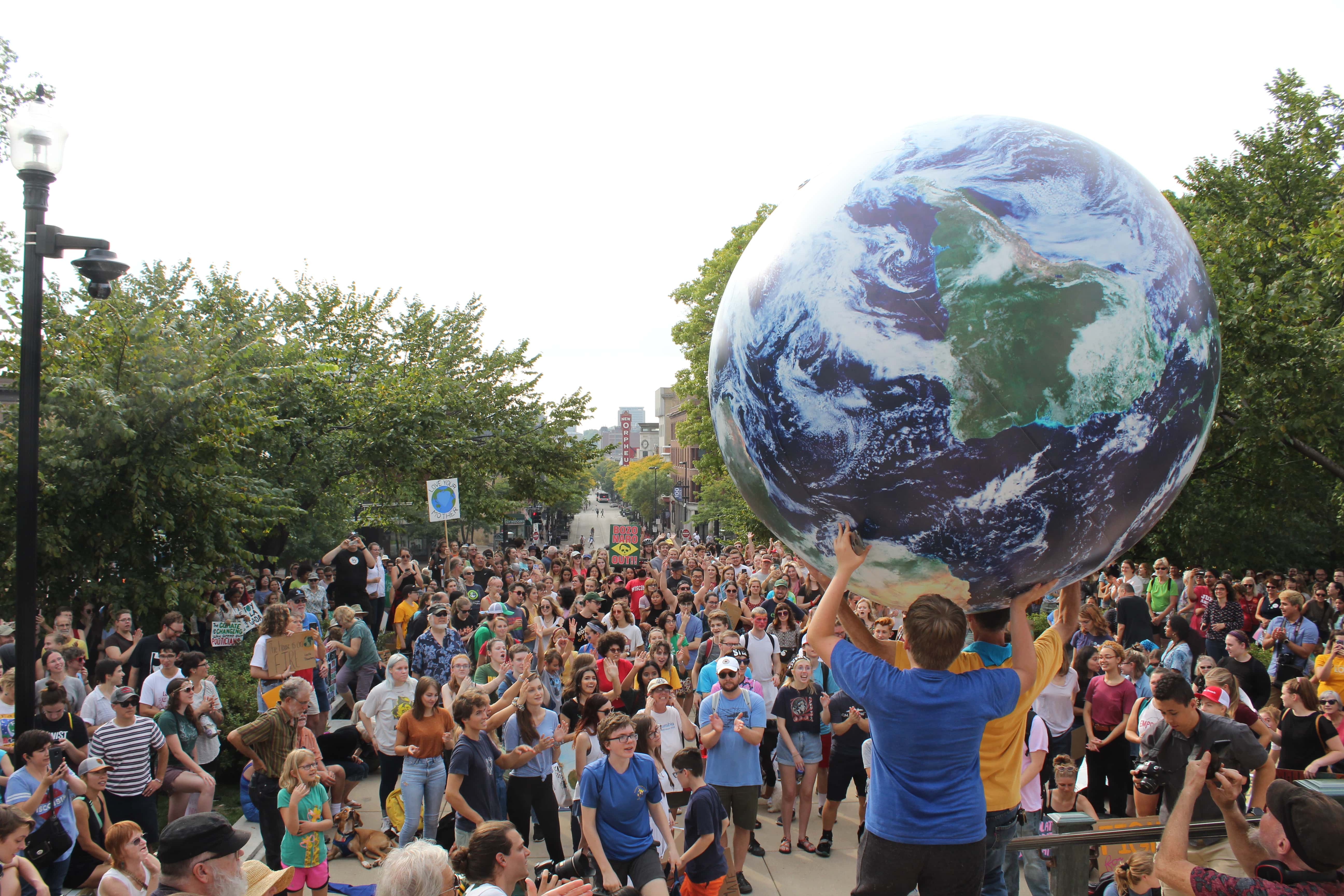
HOT TEMPER(ATURE)S
Youth activists rally against climate change
On a harsh winter night earlier this year, high school students from around the Madison area were setting the course for Wisconsin’s environmental future. On that night, Max Prestigiacomo, 18, drove to Madison to meet with other young people to discuss bringing the global climate movement to Wisconsin. A few short weeks of planning later, thousands of students across the state of Wisconsin were marching as part of the global Youth Climate Strike.
“It seems like a small, miniscule meeting that we had,” Prestigiacomo says. “We just all came together under one premise: that this is a climate emergency.”
A 2018 report from the U.N.’s Intergovernmental Panel on Climate Change reported that humans have 12 years left to prevent irreversible damage to the environment. A year later, youth around Wisconsin are stepping in to lead the fight themselves, as they see a lack of action by political leaders.
Their decision made history as the strike on March 15 was the first time that Fridays for Future, a movement popularized by Swedish student-activist Greta Thunberg, had ever been brought to Wisconsin on such a broad scale. The strike planted the seeds of a growing youth movement in Wisconsin, and a few months later, the Youth Climate Action Team was born. The organization is a nonprofit led entirely by youth who are dedicated to localizing the fight against climate change to Wisconsin and empowering young people.
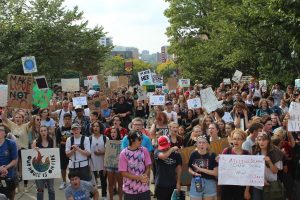
Thousands rushed to Capitol Square to advocate for a more sustainable future.
On Friday, Sept. 20, thousands of students across Wisconsin skipped school to march in a global climate strike, organized by the Youth Climate Action Team. In Madison, crowds of students gathered outside the Madison Gas and Electric building on Railroad Street near the Capitol, demanding a switch from fossil fuels to clean energy resources. Strikers packed the streets chanting slogans such as, “Hey hey! Ho ho! Fossil fuels have got to go!” and holding their signs in the air for onlookers to read. One after another, youth activists gave speeches calling for action as crowd members cheered in approval.
When it was her turn, high school sophomore Adelaide Arrigoni, 16, took the microphone and stepped up onto the wooden crate. Looking out at the sea of protesters, she admitted that the climate crisis scares her. Despite her fear, Arrigoni is facing the issue head on and encouraging other youth to do the same.
“As teens and young environmentalists and consumers, there’s things we can do even if we can’t vote,” she says. Her speech focused on actions that younger generations can take to make a significant impact in the climate fight, such as limiting single-use plastic waste, using more sustainable products and getting involved in the movement. Arrigoni recognizes that while individual actions are significant and necessary in the fight against climate change, they are not enough to stop it. Individual actions must work in conjunction with large-scale change to end the climate crisis.
In her free time, she has been drafting a proposal she plans on distributing to local businesses in her hometown of Mount Horeb, just west of Madison, on adopting more sustainable habits. From there, she hopes to begin contacting larger businesses that have a more significant impact on the issue of carbon emissions. Despite not being of legal voting age, Arrigoni is taking action in any way she can to encourage change in her community.
In August, Wisconsin Gov. Tony Evers signed an executive order declaring that the state of Wisconsin aims to be running entirely on carbon-free energy by 2050 — on par with Minnesota, but still behind states such as New York, Hawaii, New Jersey and California who have set earlier goals. While the Youth Climate Action Team believes this is a huge step in the right direction, they also argue that the time frame should be pushed up to 2030 if they want to keep global emissions to a level that will prevent further damage. They are also demanding that Evers, counties and municipalities in the state of Wisconsin declare a climate emergency.
“Individual actions are not the place we should be right now, that should have happened, like 40 years ago,” Prestigiacomo says.
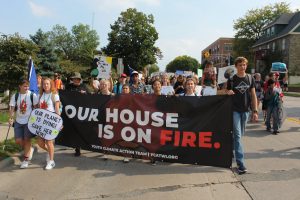
Across the state, Wisconsin youth joined the global Youth Climate Strike as students around the world fight for the future of the planet.
As thousands of youth marched down the streets of Madison, many signs depicted the earth engulfed in flames with a message that read, “Our house is on fire.” To those marching, this message is both metaphorical and literal. The sign points to the rise in carbon emissions, as well as the planet’s average temperatures, which prompts fires in some parts of the world.
Because the youth today say they will be the ones to endure the long-term effects of climate change, they have decided to fight for their future — a better future.
“No intelligent species like ourselves would destroy the very house that they lived in,” Prestigiacomo says. “If your house was on fire, you would be panicking.” As the September march brought traffic to a halt and students filled the streets, all eyes were on the youth strikers.
Onlookers stopped to watch as the students made their way up to the Capitol building, with some even joining the march. From the front of the crowd, the end was nowhere in sight. People of all ages filled the steps of the Capitol building and its surrounding lawn to hear what the youth had to say.
“Science tells us that we only have a few years to right our wrongs, this can’t hold off for another decade or even another year. We have to vote for candidates who support green energy sustainability in this upcoming election,” student activist and Madison resident Veronica Cruz, 19, said on the Capitol steps. “If nothing gets done to address climate change then nothing we are fighting for or living for now will matter. Our planet is literally dying at our hands.”
Wisconsin youth are using their voice to call upon those with the power to make a difference — from adults with the right to vote to public officials and politicians who can make systemic changes. Youth are demanding a change in the hopes of saving their future.
Sophie Guthier, 19, an executive director of the Youth Climate Action Team, and Prestigiacomo had the opportunity to attend the U.N. Youth Climate Summit in New York, which occurred Sept. 21, the day after the strike. According to the U.N. website, the Youth Climate Summit was a platform for young climate action leaders to showcase solutions and engage with decision-makers at the U.N.
At the summit, thousands of youth from all around the world crowded the streets, eager to finally have their opinions heard. But as the rooms began to fill, many of them were denied entrance because they did not meet the age requirement. According to Prestigiacomo, the U.N. defined “youth” at the summit as 18-to-31-year-olds, causing many of the young people in attendance to be unable to do what they came there to do — represent their peers on what they see as a critical issue.
“All these youth activists who did the groundwork, did the grassroots organizing, came out there to be part of the discussion, and they couldn’t participate,” Prestigiacomo says. “Even when someone did get past into a certain area, there’d be a line and it’d be full, and the whole room would be packed with white adults.”
Guthier says she “wasn’t surprised by how [they] were treated” but instead disappointed. She expected that people at the U.N. Youth Climate Summit would be interested in listening to what the youth had to say. “It tends to be that the people in power are the ones that don’t want to listen to us,” she says.
Prestigiacomo was also particularly frustrated with the events at the summit. “They’re still acting like they can solve this [issue] with business as usual,” he says. “I came back, honestly more galvanized. I felt inspired because I realized that we can’t rely on these international institutions to be doing the work for us.”
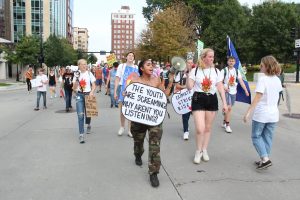
Veronica Cruz leads the mass of community members in rallying for climate justice.
While the political leaders left something to be desired, Guthier and Prestigiacomo agreed that networking with other young people at the summit was both inspiring and motivating. Seeing how others are continuing to fight despite the difficulties they face gave them the hope they needed from the summit.
Prestigiacomo said the most important youth activism work is happening at the local and grassroots levels. These organizations localize the issue to a specific state or community and make it something that residents can relate to, rather than having generalized national campaigns that often make the issue seem more abstract. Prestigiacomo explains that it is hard for many people to view climate change as an urgent matter because national campaigns often focus on issues that are not relatable to all areas of the country. In an environment that faces hyperpolarized environmental effects, such as wildfires and flooding or heatwaves and polar vortexes, many people still believe that they are not affected by climate change because they don’t know how to recognize the signs.
“It dawned upon [the Youth Climate Action Team] that localizing the climate crisis to Madison, and Wisconsin as a whole, would be more effective at convincing people, voters specifically, that the climate crisis affects us here,” Prestigiacomo says. “Wisconsin is what we’re focused on and localizing [the issue] to the people that are here who actually experience the stuff that we’re talking about.”
Though climate change is a global crisis that impacts every person on the planet, younger generations are continually the ones stepping up to demand significant actions be taken.
“We don’t want to be doing any of this, and it really sucks that we have to, but the only other option is for us not to have a future,” Guthier says. “There’s either going to be a turning point where we go into mass extinction or where young people are taken seriously. We need to be taking action right now. Which side do you want to be on?”
According to Guthier, the biggest roadblock these youth activists face is their age.
“Historically, it’s been young people and young adults that have been making the change at the forefront of issues, but that doesn’t mean it’s been easy for them,” she says. “As a society, people are always telling young people that you shouldn’t care about what’s happening. You don’t have a voice.”
Based on their experiences in student activism, Guthier and Prestigiacomo agree that government officials do not seem to be taking young people seriously. Guthier says that she has talked with teachers and some city and local officials that wanted to listen, but the issue lies in getting to the top. “It seems like the higher you go up the ladder, people just don’t want to listen to you anymore.”
“You can ignore us now, but you can’t ignore us in two to three years when we’re going to be voting you out of office,” Guthier says.
A seat on Madison’s city council is up for election, and the Youth Climate Action Team is determined to fill the vacancy with a climate organizer. Prestigiacomo has announced that he will be running for the spot and hopes to use the position to have a direct influence on the legislators. The Youth Climate Action Team hopes that having a young climate activist on the city council will help their voices be heard.
As the fight against climate change makes its way to Wisconsin, young people are proud to be at the front of the movement.
“Youth activism at its heart is young people looking at this community, not as what it is, but what it could be,” Prestigiacomo says.
WANT TO HELP?
Use this guide for information and tips on recycling.
Learn more about Wisconsin’s environmental history
Use the button below to explore some of the key moments in Wisconsin’s environmental history
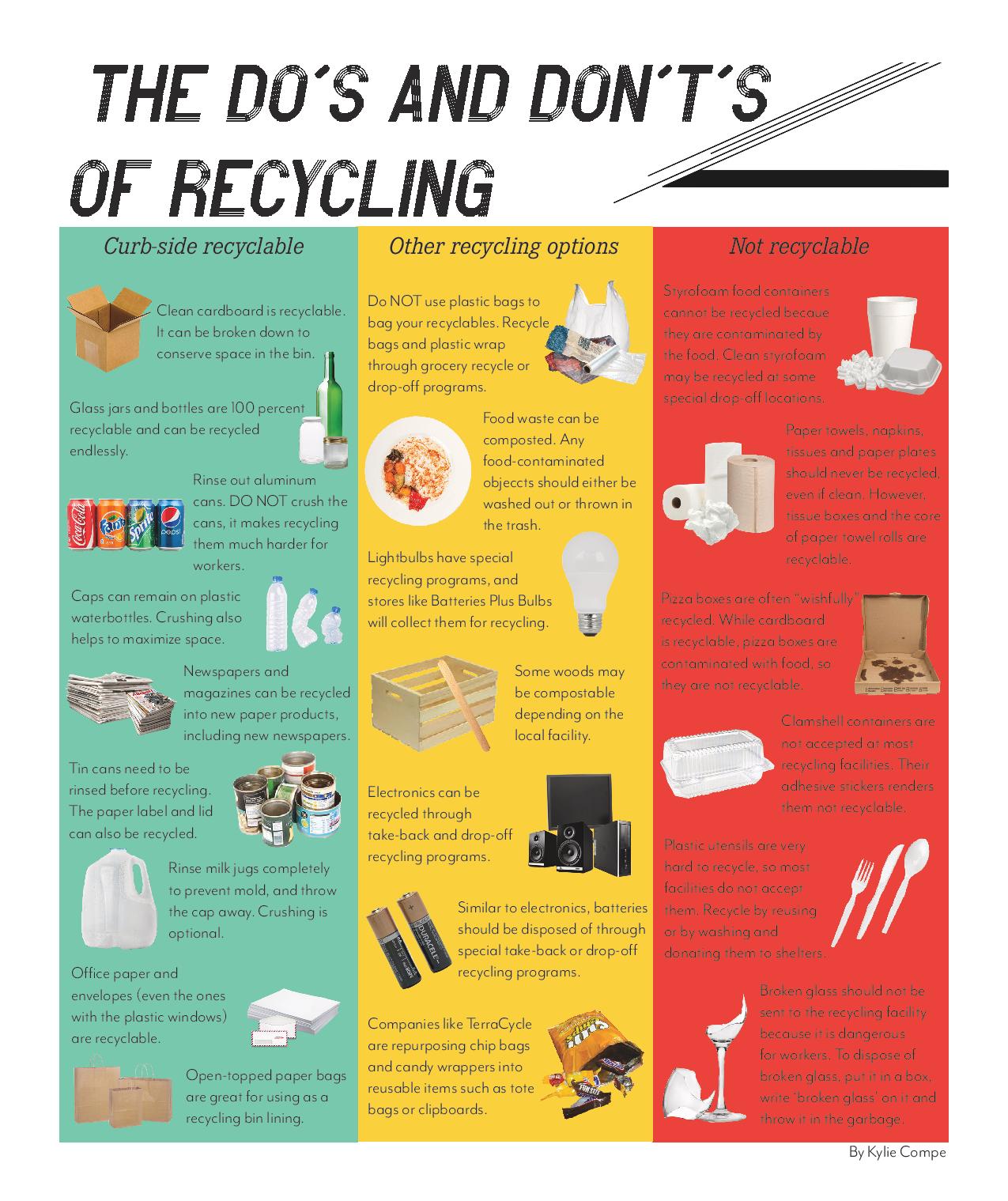
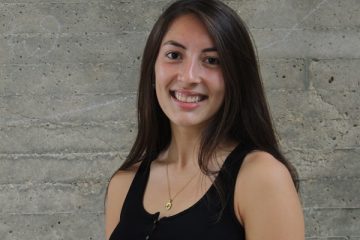
Kylie Compe | Photographer
Senior studying journalism and environmental studies with certificates in photography and digital studies